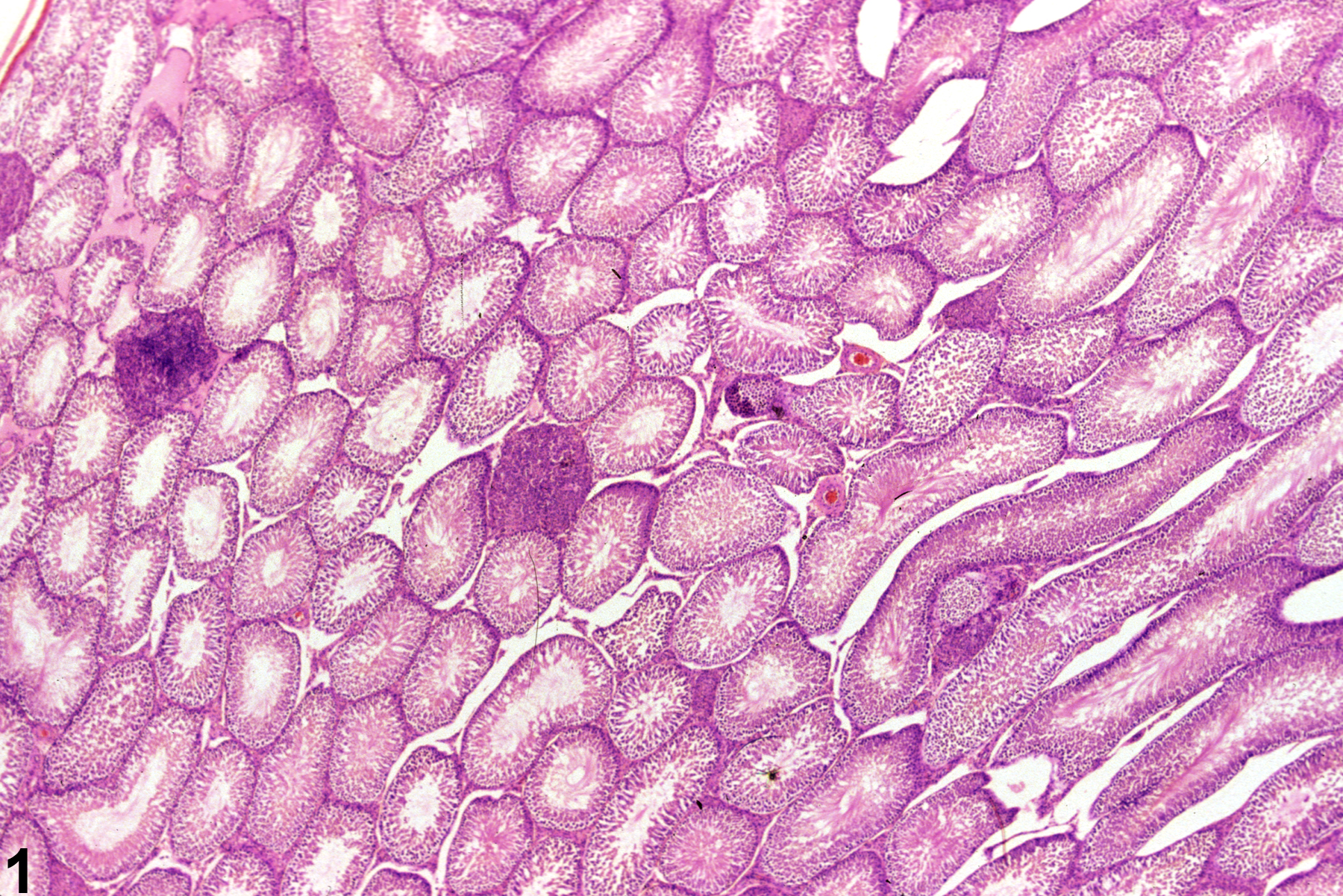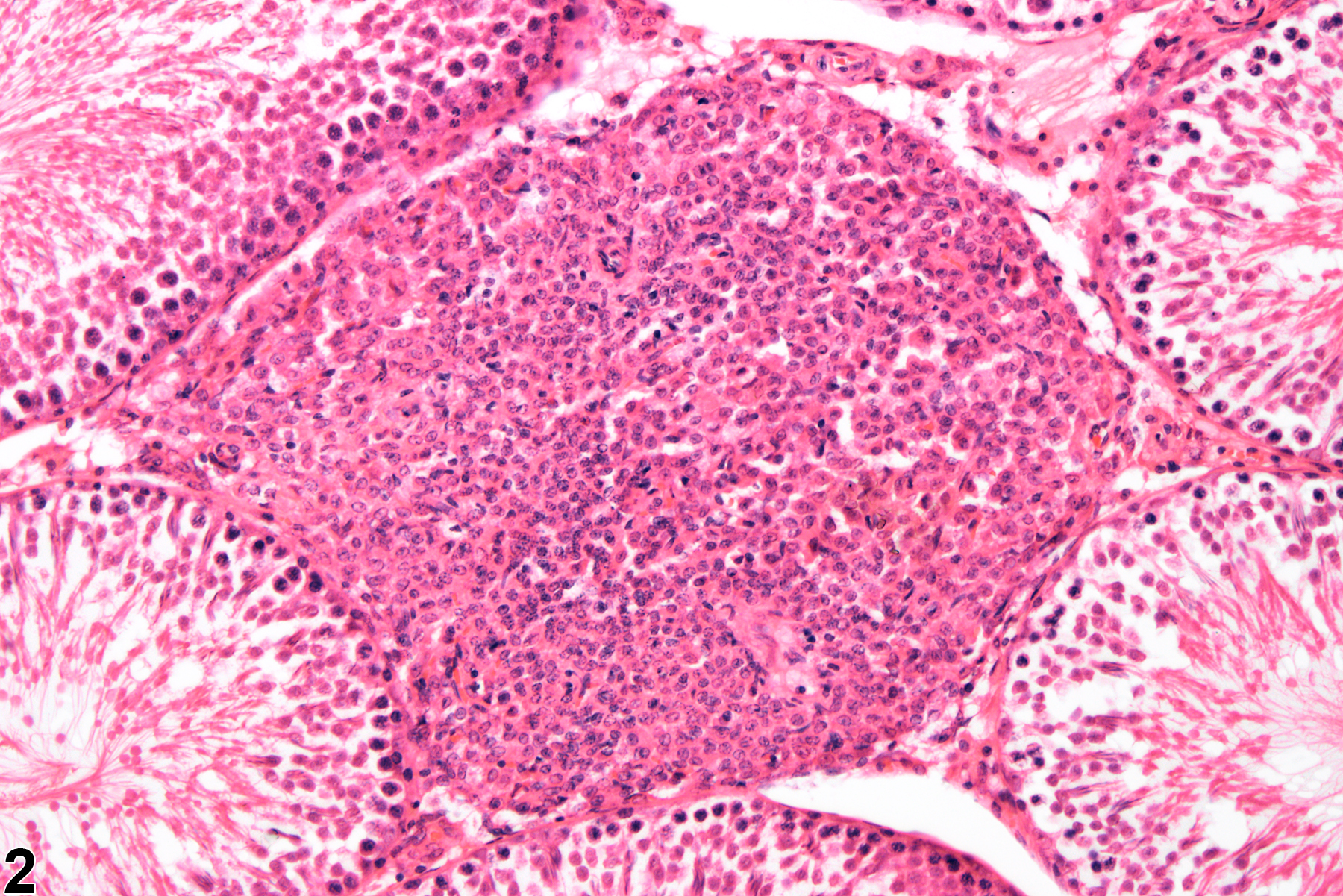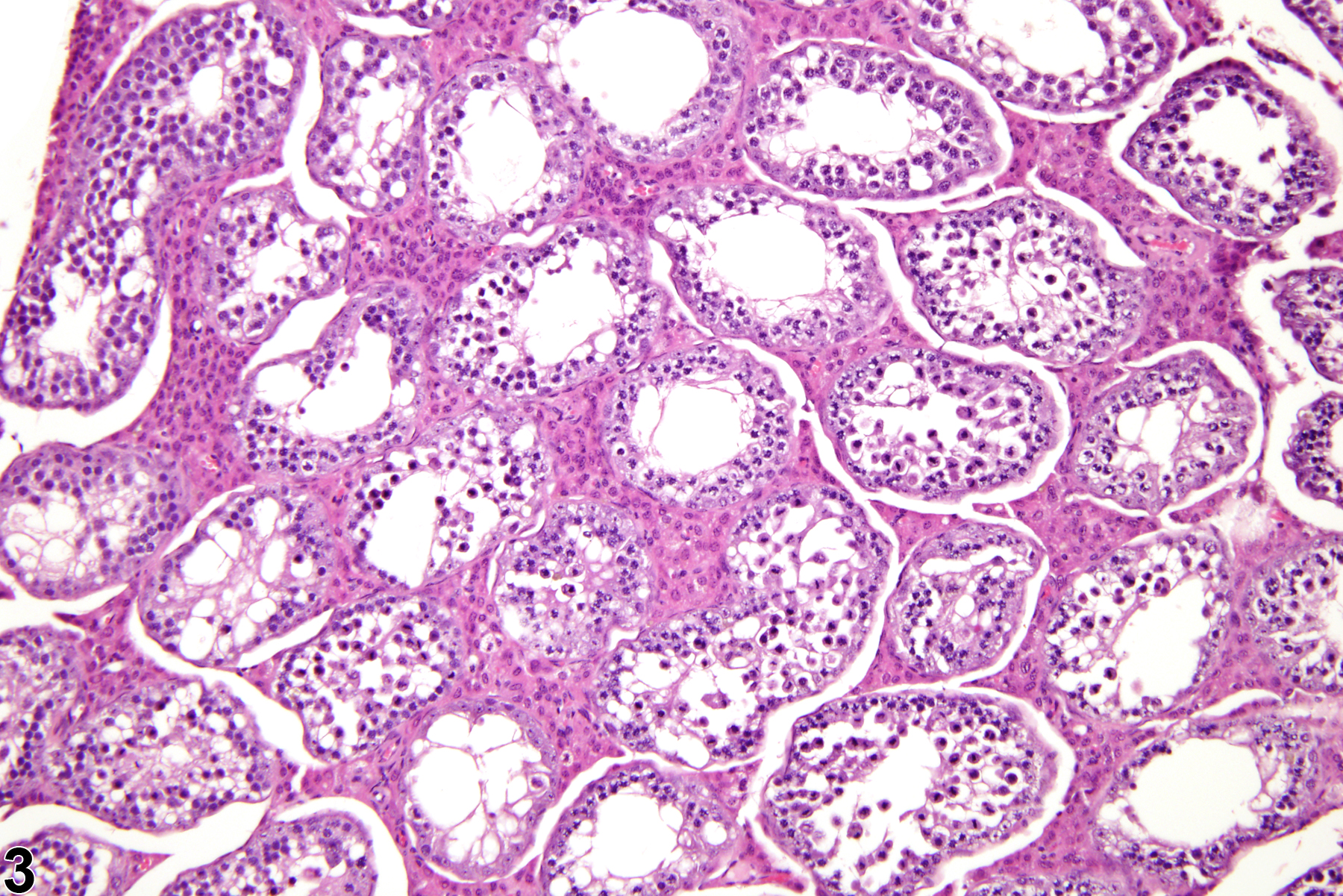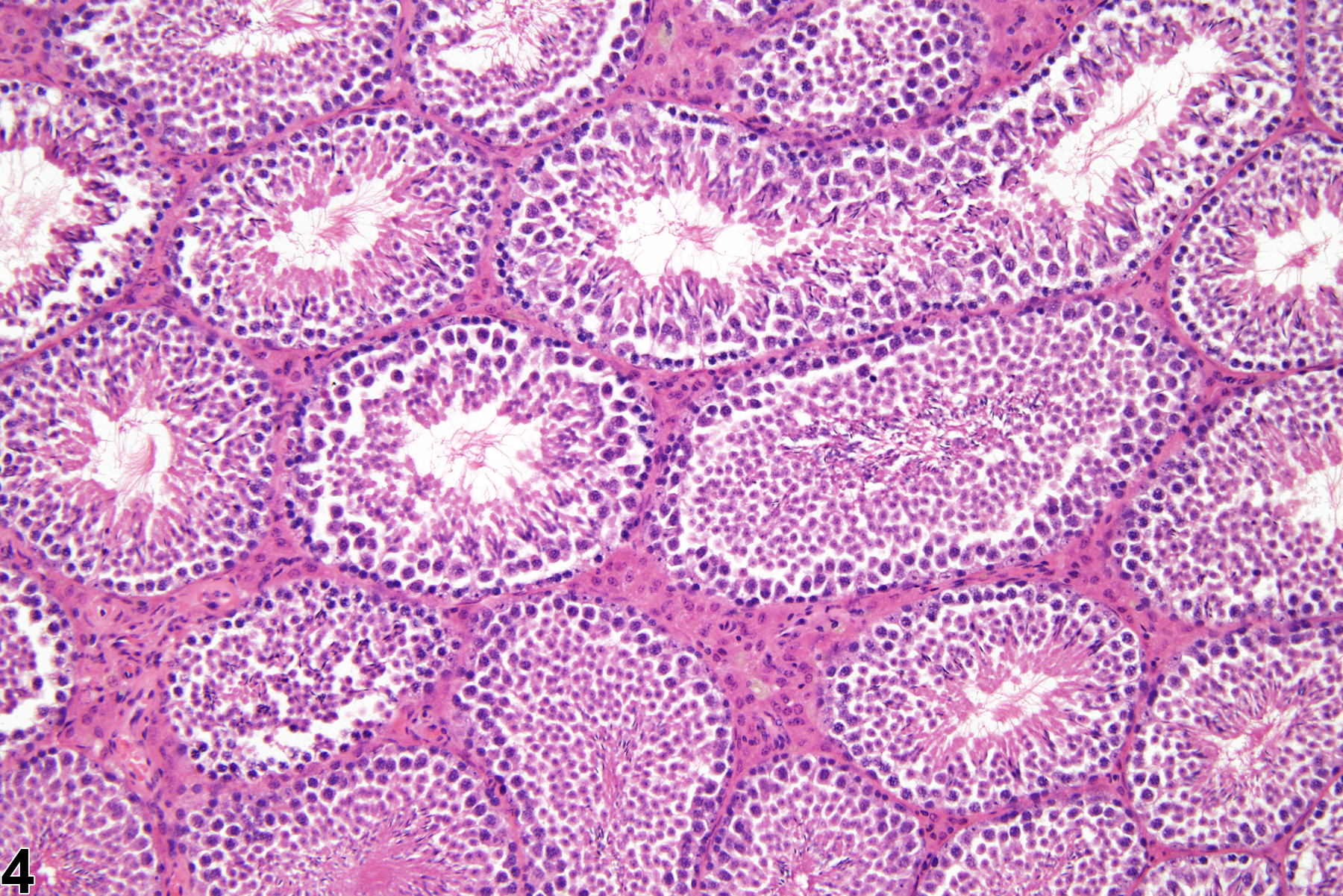Reproductive System, Male
Testis, Interstitial Cell - Hyperplasia
Narrative
Clegg ED, Cook JC, Chapin RE, Foster PMD, Daston GP. 1997. Leydig cell hyperplasia and adenoma formation: Mechanisms and relevance to humans. Reprod Toxicol 11:107-121.
Abstract: http://www.ncbi.nlm.nih.gov/pubmed/9138629Cook JC, Klinefelter GR, Hardisty JF, Sharpe RM, Foster PMD. 1999. Rodent Leydig cell tumorigenesis: A review of the physiology, pathology, mechanisms, and relevance to humans. Crit Rev Toxicol 29:169-261.
Abstract: http://www.ncbi.nlm.nih.gov/pubmed/10213111Dixon D, Heider K, Elwell MR. 1995.Incidence of nonneoplastic lesions in historical control male and female Fischer-344 rats from 90-day toxicity studies. Toxicol Pathol 23:338-348.
Abstract: http://www.ncbi.nlm.nih.gov/pubmed/7659956Huseby RA. 1976. Estrogen-induced Leydig cell tumor in the mouse: A model system for the study of carcinogenesis and hormone dependency. J Toxicol Environ Health Suppl 1:177-192.
Abstract: http://www.ncbi.nlm.nih.gov/pubmed/11351Juriansz RL, Huseby RA, Wilcox RB. 1988. Interactions of putative estrogens with the intracellular receptor complex in mouse Leydig cells: Relationship to preneoplastic hyperplasia. Cancer Res 48:14-18.
Abstract: http://www.ncbi.nlm.nih.gov/pubmed/3334987Radovsky A, Mitsumori K, Chapin RE. 1999. Male reproductive tract. In: Pathology of the Mouse: Reference and Atlas (Maronpot RR, Boorman GA, Gaul BW, eds). Cache River Press, Vienna, IL, 381-407.

Testis, Interstitial cell - Hyperplasia in a male F344/N rat from a chronic study. Two focal areas of hyperplasia are present in the testis.





